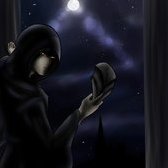Minecraft.getMinecraft().entityRenderer.enableLightmap();
You are enabling it(even though it should aready be) but not doing anything with it at all. If you are going to work with the lightmap - do so, set it's coordinates.
Your issue is that you are using too much GL and not enough tessellator.
tessellator.getBuffer().begin(GL11.GL_QUADS, DefaultVertexFormats.POSITION_TEX)
->
tessellator.getBuffer().begin(GL11.GL_QUADS, DefaultVertexFormats.POSITION_TEX_LMAP_COLOR)
And then you can simply have the lightmap coordinates in your VertexBuffer vertices.
Or even better use a FastTESR. It's format is BLOCK([3]f pos, [1]hex color, [2]f uv, [2]s lightmap) so it already has the format that is fine for your cause. That is the preferred solution as if you do it correctly(and it is pretty easy to do so) you will achieve exactly what you need without any need for GL calls at all and will gain a significant performance boost.


